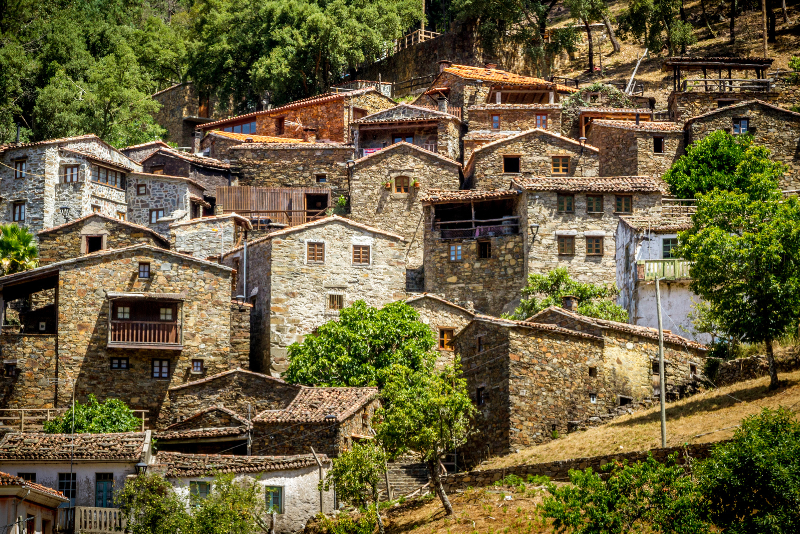Tucked away in the rugged landscapes of northern Portugal, the hidden villages of Gerês offer a captivating glimpse into a world where time seems to stand still. These small, traditional communities, nestled within the lush surroundings of Gerês National Park, are a testament to the region’s enduring connection to its history and heritage. Far removed from the hustle and bustle of modern life, these villages invite visitors to step back in time and experience a way of life that has remained largely unchanged for generations.
Wandering through the cobbled streets of villages like Pitões das Júnias and Campo do Gerês is like entering a living museum. Stone houses with slate roofs, built by hand centuries ago, line the narrow pathways, creating an atmosphere that feels frozen in another era. Many of these homes are still inhabited by local families who continue to live in harmony with the land, practicing traditional farming methods and preserving customs that have been passed down through countless generations.
The history of these villages is deeply intertwined with the natural landscape of Gerês. Surrounded by rolling hills, dense forests, and crystal-clear streams, the villages were often isolated from the outside world, fostering tight-knit communities that relied on their environment for survival. Ancient terraced fields, used for agriculture, are a reminder of the ingenuity of the people who carved out a living in this rugged terrain. Visitors can still see locals tending to their flocks of sheep and goats, echoing the pastoral traditions that have defined the region for centuries.
Each village holds its own unique charm and story. In Pitões das Júnias, visitors can explore the ruins of a 12th-century Cistercian monastery, which exudes a sense of mystery and spiritual significance. The village of Campo do Gerês, on the other hand, is home to a fascinating ethnographic museum that showcases artifacts and exhibits highlighting the traditional way of life in the region. These cultural treasures offer a deeper understanding of how these communities thrived in harmony with their surroundings.
Religion also plays a significant role in the identity of Gerês’ villages. Small chapels and churches, some dating back hundreds of years, stand as symbols of the villagers’ faith and resilience. These places of worship often serve as the heart of the community, hosting festivals and gatherings that bring residents together to celebrate their shared heritage. For visitors, these events provide a rare opportunity to witness and participate in local traditions that have remained untouched by time.
Despite their historical allure, the hidden villages of Gerês are not just relics of the past—they are living, breathing communities that continue to thrive in their own quiet way. Many locals are eager to share their stories, welcoming visitors with open arms and a warm smile. Sampling homemade regional delicacies, such as smoked sausages, goat cheese, and hearty cornbread, is not just a culinary experience but a reflection of the deep-rooted connection between the people and their land.
Discovering these hidden villages is more than just a journey through picturesque scenery—it’s an invitation to connect with the soul of Gerês. Each visit offers a sense of timelessness, a rare chance to step away from the fast pace of modern life and immerse oneself in the rich history and traditions of a truly remarkable region. For those who seek authenticity, peace, and a deeper understanding of Portugal’s cultural heritage, the villages of Gerês are an experience not to be missed.






